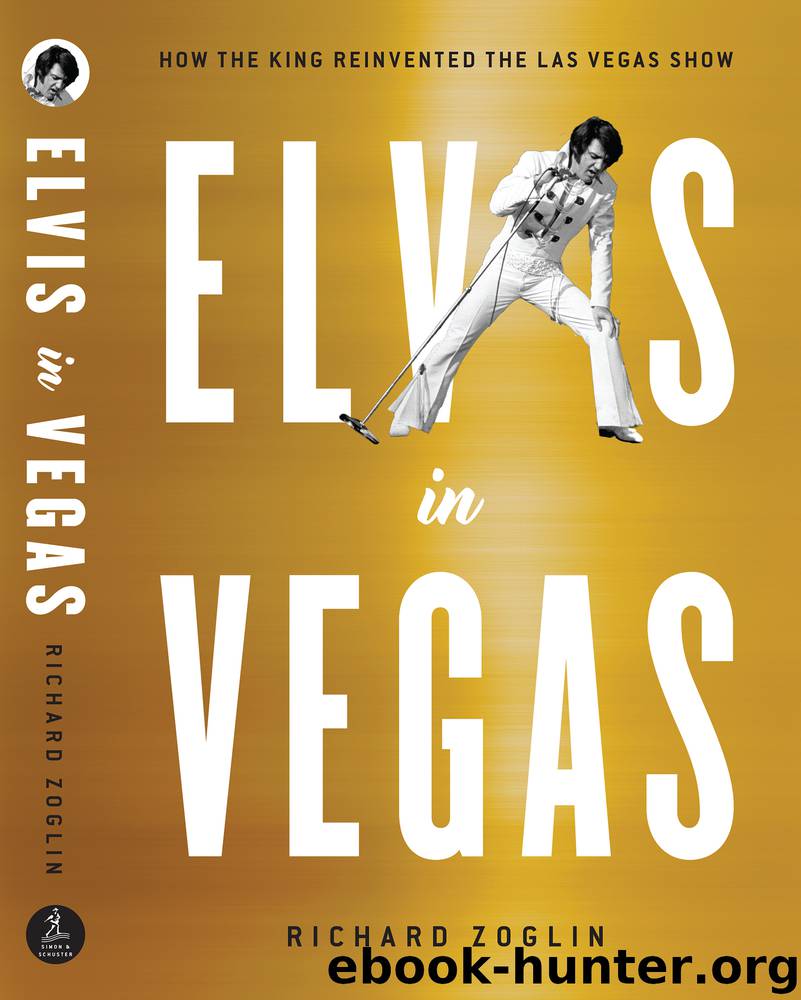Elvis in Vegas : How the King of Rock 'n' Roll Reinvented the Las Vegas Show (9781501151217) by Zoglin Richard

Author:Zoglin, Richard
Language: eng
Format: epub
Publisher: Simon & Schuster
Published: 2019-07-22T16:00:00+00:00
As the culture began to shift, concerns grew that Vegas entertainment was not keeping pace, or doing enough to attract younger audiences. Many of the top headliners who had dominated the town for years—Danny Thomas, Red Skelton, Jack Benny, George Burns—were getting old and waning in popularity. Where were the younger stars who would replace them? Virtually none of the hard-rock bands or singer-songwriters who were transforming popular music in the late sixties would come anywhere near Las Vegas. “The hotels didn’t want them, and the acts didn’t want to play Vegas,” said one agent. “If you played Vegas, you were selling out.” Lamented Variety in early 1968, “Only a handful of new acts and groups are making the transition by having that ‘older appeal.’ ”
A few of the younger pop singers did become Vegas regulars during these years, including such hitmakers as Petula Clark (“Downtown”), Trini Lopez (“If I Had a Hammer”), and Roger Miller (“King of the Road”). And for the most part, they were happy to be there. “At that time Vegas was the thing to do,” said Lopez, the Texas-born Latino singer who made his Las Vegas debut in 1965. “It was prestigious. If you were doing Vegas, you were doing well.” The Supremes were a popular act at the Flamingo during the late sixties, adding Cole Porter songs to their familiar repertoire of Motown hits. Playing Vegas was “huge for us,” said Mary Wilson, one of the group’s founding members. But the Supremes had a commercial sheen that made them well suited to nightclubs—and an artist-development team behind them at Motown that groomed them for Vegas. “We were not an R and B act,” said Wilson. “We were doing standards before we were doing Motown. We were known as a classy kind of act, so it was a perfect match.”
But Vegas was also trying to look hip, in an effort to attract the tie-dyed, peace-and-love generation—what Variety liked to call the “juve market.” The lounges featured trendy dance shows like Watusi Stampede and Mad Mod World, and young music groups with a more contemporary vibe, like the Brooklyn Bridge and the Mod Squad (fronted by future country star Lee Greenwood). “Las Vegas, the bastion of adult-appealing entertainment, is going contemporary,” reported Billboard in 1967, “reaching out for the sounds and sights of the ‘now’ generation.” The older, more traditional lounge acts had to “get out or get groovy,” as Mike Weatherford put it in Cult Vegas. Freddie Bell, the lounge-show rock ’n’ roller from the fifties, came out of retirement to try to catch the new wave, returning to Vegas with a band called Action Faction. “I wore the bells, I wore all the outfits, trying to be what was happening at that time,” Bell recalled. “But for me it didn’t work.”
One younger performer for whom it did work was Ann-Margret. The sexy musical star had first appeared in Las Vegas in 1960, as George Burns’s hot-wired opening act at the Sahara. (“George Burns has a gold mine in Ann-Margret,” raved Variety.
Download
This site does not store any files on its server. We only index and link to content provided by other sites. Please contact the content providers to delete copyright contents if any and email us, we'll remove relevant links or contents immediately.
| Africa | Asia |
| Canadian | Europe |
| Holocaust | Latin America |
| Middle East | United States |
Fanny Burney by Claire Harman(26506)
Empire of the Sikhs by Patwant Singh(22959)
Out of India by Michael Foss(16776)
Leonardo da Vinci by Walter Isaacson(13144)
Small Great Things by Jodi Picoult(6954)
The Six Wives Of Henry VIII (WOMEN IN HISTORY) by Fraser Antonia(5379)
The Wind in My Hair by Masih Alinejad(5022)
A Higher Loyalty: Truth, Lies, and Leadership by James Comey(4820)
The Lonely City by Olivia Laing(4730)
The Crown by Robert Lacey(4709)
Millionaire: The Philanderer, Gambler, and Duelist Who Invented Modern Finance by Janet Gleeson(4351)
The Iron Duke by The Iron Duke(4269)
Papillon (English) by Henri Charrière(4174)
Sticky Fingers by Joe Hagan(4083)
Joan of Arc by Mary Gordon(4000)
Alive: The Story of the Andes Survivors by Piers Paul Read(3953)
Stalin by Stephen Kotkin(3864)
Aleister Crowley: The Biography by Tobias Churton(3571)
Ants Among Elephants by Sujatha Gidla(3400)
